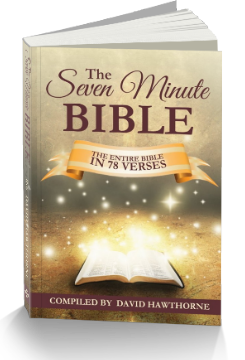A few months ago, I read Rocco Boni’s Quantum Christian Realism, a fascinating book that explores how quantum physics- especially its discoveries about indeterminacy and immateriality- can help ground key Christian doctrines like free will, providence, and soul–body hylomorphism/ dualism at the most fundamental layer of reality. A couple of years ago, I came across a video by Inspiring Philosophy titled “Christian Panentheism,” in which he enthusiastically championed what he called Palamite Panentheism: the Eastern Orthodox teaching that God is both beyond and actively present within creation through His divine energies. While these perspectives might initially sound like New Age speculation, I’ve found they actually fit together remarkably well and provide a compelling “physic” for an Orthodox metaphysic, illuminating how deep science and ancient theology together illuminate the mystery of existence.
Orthodox panentheism, especially as expressed through St. Gregory Palamas, teaches that God is radically beyond all created things (transcendent) yet also present everywhere within creation (immanent). This is not pantheism (identifying God with the world itself), nor deism (God as a remote creator), but a doctrine in which God lovingly sustains every instant of existence while remaining far greater than all created things. This vision is captured by the distinction between God’s unknowable, imparticipable essence and His energies, which are the living activities, presence, and light by which God interacts with and gives life to the world.
Eastern Orthodox panentheism means that the world truly exists “in” God, and God in some sense “in” the world, but the world is never equal to or confused with God. The energies of God thus permeate creation, upholding and filling all things, yet God’s essence remains infinite and totally beyond.
When we look at Quantum Christian Realism, Boni’s key insight is that the quantum world (our universe’s most fundamental layer) is itself immaterial and indeterminate. Quantum physics shows that, at its core, reality isn’t just a collection of predictable material objects: it rests on invisible fields, open possibilities, and events that occur without strict determination. The quantum vacuum, for example, appears to be “nothing,” yet contains the potential for particles and energy to burst forth unpredictably, not by pre-existing material, but by a causality that ultimately transcends what we can see or measure.
This scientific “nothingness” is actually not the absolute nothing from which Christian theology teaches God created all things. Orthodox doctrine insists that God created the universe ex nihilo from an absolute, metaphysical nothing where truly no thing existed except God. As the Book of Wisdom says: “For he created all things out of nothing.” (Wisdom 11:17) The quantum “nothing” is the first created principle: an immaterial, potent background, from which everything else unfolds. Creation began with the absolute nothing of theology, then God, by His Word, willed the quantum field, and everything else came to be from that.
This layered structure has profound consequences for several doctrines of Christian belief:
+Free Will: Quantum indeterminacy at the deepest level means not all events are predestined, opening genuine space for human freedom. Scripture and Orthodox tradition value real choices and responsibility; quantum theory confirms that nature itself does not force every outcome.
+Providence: Quantum openness allows God to sovereignly guide events, using chance as a canvas for divine purposes and subtle providential intervention, without violating natural law or human freedom.
+Body/Soul Dualism (Hylomorphism): The quantum world reveals a reality more subtle and immaterial than classical physics imagined, making it more conceivable that an immaterial soul could interact with a material body- affirming Orthodox teaching on the soul’s dignity and influence.
+Creation ex nihilo: The emergence of energy and matter from the quantum vacuum is an analogy for Christian teaching that God created “from nothing,” not from prior matter.
In summary, Orthodox panentheism and Quantum Christian Realism together reveal a cosmos alive with mystery, openness, and the active presence of God. God creates all things from nothing; the very fabric of reality, which is revealed by quantum physics, is crafted to allow freedom, providence, soul, and creation itself to be real, miracles woven into the world’s deepest structure by the living God.
For those interested in the intersection of faith, science, and Christian/ Orthodox theology, I highly recommend exploring both of these resources. Boni’s Quantum Christian Realism offers a thoughtful and accessible approach to how modern quantum physics can enrich an Orthodox Christian understanding of reality, while Inspiring Philosophy’s video on “Christian Panentheism” provides a clear and engaging introduction to the Orthodox Palamite vision of God’s relationship with creation. Both the book and the video serve as excellent gateways for anyone curious about how science and ancient Christian doctrine can meaningfully speak to each other today.
You can find Quantum Christian Realism on Amazon here:
And the video “Christian Panentheism” is available on the Inspiring Philosophy YouTube channel here:



